Faculty Lecturers 1999-2009
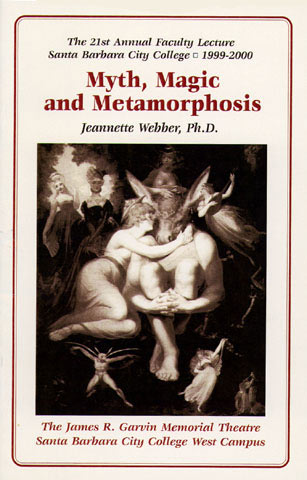
Jeannette (Jinny) Webber came from Glendale, California, to UCSB as a 17-year old freshman with a 10-month old baby and a husband on a football scholarship. She majored in English with a minor in history for fun-in case she couldn't finish college due to family and work responsibilities.
But she did complete her B.A. (1963) and went on to earn an M.A. (1965), with two daughters born while she was in graduate school. After receiving her degree, she worked as a lecturer in composition at UCSB for three years. In 1967-68, she was granted a Fulbright fellowship to teach on the island of Cyprus. It was during her year on Cyprus, birthplace of Aphrodite, that her fascination with mythology began. That interest led to a Ph.D. in Religious Studies from UCSB (1986), and forms the basis for her lecture today.
Jinny Webber's tenure at SBCC began in 1969. Over these 30 years, she has taught just about every composition and literature course offered by the English Department, with a special focus in recent years on World Literature, Homer to Dante, and on Shakespeare. Among the courses she developed is Contemporary Women Writers. Because there was no good college text on the market, she and Joan Grumman edited Woman as Writer, published by Houghton Mifflin in 1978.
She chaired the English Department from 1979-85 and 1997-98. Besides serving on the Representative Council and the Academic Senate, Professor Webber has chaired the Sabbatical Leave and Planning and Resources committees, served as an administrative intern on Matriculation, and sat on a variety of Senate and English Department committees. In 1980, partly as a result of an English Council conference she attended, she set up an English placement system, forerunner to today's Assessment program.
A highlight of her SBCC career came in 1983, when she and Joan Grumman were asked to develop the initial Cambridge program, protytype for SBCC's Study Abroad semesters. Besides piloting that program, she has directed Cambridge several times since. Working in England has not only given her a chance to introduce students to wider cultural and academic worlds, but also offered personal enrichment and travel opportunities which have inspired her research and fiction projects. She has written two historical novels, one set in Shakespeare's England and one in Bronze Age Greece, so far unpublished, as well as contemporary stories with an historical twist.
In 1997, she delivered a paper at the Modern Language Association Conference, "Doris Lessing's Prophetic Voice in Shikasta: Cassandra or Sibyl?" which she expanded for publication in Spiritual Exploration in the Works of Doris Lessing, Greenwood Press, 1999. She has taught an occasional course at Pacifica Graduate Institute of Mythological Studies and for SBCC's Continuing Education Division.
SBCC has not only provided Professor Webber with a stimulating and rewarding career, but has also benefitted her children, Eric Dawson, M.D., Kristen Glass, and Michelle Smith, who began their educations here. She anticipates that her grandchildren, Brittany and Morgan Glass and Spencer and Summer Smith, will do likewise.
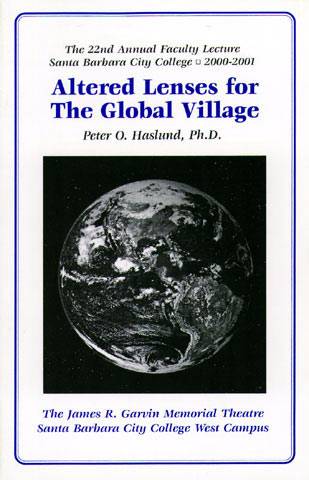
Dr. Peter Haslund was born in Copenhagen, Denmark, on the eve of German occupation. When his Jewish mother and family fled to Sweden in 1943, he was sent to live on a Danish farm in Slagelse under the care of a foster family, Adolf and Maren Mikkelsen and their daughter Else Poulsen. After the war, he was reunited with his mother with whom he immigrated to the United States in 1949, settling in Los Angeles.
Haslund attended Los Angeles area schools including Los Angeles City College from which he earned a it A. A. degree and California State University at Los Angeles for his B.A. degree. He earned an M.A. degree in Political Science from Midwestern University, Texas. He joined the U.S. Air Force as a commissioned officer in 1963 and served on active duty for six years, including a one-year tour of duty in Southeast Asia, 1967-68.
Upon completion of military service, Haslund returned to graduate school at the University of California, Santa Barbara, in 1969 and, in the fall of that year, started teaching at Santa Barbara City College as a part-time instructor. He joined the Political Science faculty on a full-time basis in 1973.
Convinced that students learn most effectively by being in close proximity to their subject, Haslund began taking students to Sacramento to observe State politics in the summer of 1974. Students would spend their days in the Legislature, and interviewing lobbyists, administrators and legislators, as well as the governor of California. In the summer of 1981, he changed venue and began taking students to Washington, D.C., where students had an even greater opportunity to experience the world of politics.
A focus of his doctoral dissertation was the application of television to the study of American politics, and in 1976, he began an eight-year "mini-career" as a television producer of weekly documentary and commentary programs for Santa Barbara area residents. "Community in Process" explored sensitive issues, ranging from spousal abuse to live election coverage, emanating from the County Court House.
His long-term academic interest has focused on China since taking his first undergraduate Course in Chinese Politics in 1962. A Fulbright grant made it possible for him to study at Shandong University in 1984, and on the strength of his own positive experience, he initiated a Study Abroad program for SBCC students at Shandong University in 1985. Next fall's program will mark the eighth visit for our students. Haslund also took students to the Soviet Union in 1990, locating at Kiev State University in what is now Ukraine.
He developed the International and Global Studies major for SBCC as an interdisciplinary approach to the exploration of international phenomena, and has been team-teaching the "foundations" course of that major since it was developed in 1997.
Haslund has been an active member of his community. He serves as a member of the Board of Directors of the Nuclear Age Peace Foundation, as President of the Weihai-Santa Barbara Sister City Association, as Chair of the Scholarship Committee of the American Scandinavian Foundation, and as President, Board of Directors, Western Collegiate Model United Nations. In 1989, he was honored by an appointment as Visiting Professor at Shandong University, and in 1991, was the recipient of the Teaching Excellence Award presented by the National Institute for Staff and Organizational Development, University of Texas at Austin.
He is married to Bets Wienecke, and their blended family includes four adult children, Bill, Christina, Elizabeth and Melitta, and three grandchildren, Alexandra, Benjamin and Nicolaus.
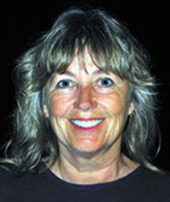
Genevieve (Genny) Bockus Anderson was the oldest of five children born within seven years to Janet and Bill Bockus. Growing up without a television, her parents replaced this activity with sports, hiking and camping, resulting in exceptionally close family ties. Genny developed an early appreciation for nature through this lifestyle that became focused on the ocean during high school.
Genny attended UCSB right out of high school and received her B.A. degree in Zoology in 1968. Most of her zoological studies were marine oriented, and she developed a special love for intertidal marine animals. Her favorite animals were marine slugs, known as nudibranchs. She continued her studies at Moss Landing Marine Laboratories, in Monterey Bay, receiving her Master's degree in Marine Ecology in 1971. Her research was on two species of marine slugs - Corambe pacifica and Doridella steinbergae. Her work is still considered one of the most comprehensive studies of these two species.
During her college years at UCSB Genny learned to SCUBA dive while working at the Undersea Gardens, a marine aquarium, in Santa Barbara in the 1960s. She continued her SCUBA diving with SBCC students and yearly international marine biology trips with her husband, Shane (also a marine biologist).
After college Genny worked as an environmental consultant for the Southern California Association of Governments (SCAG), in 1971, creating the baseline beach surveys for Los Angeles, Orange and Ventura counties. These surveys are used today for historical comparison studies. Genny began teaching part-time at SBCC and UCSB in 1972. She found a particular fondness for teaching marine biology to beginning students, which has continued to the present.
In 1982 Genny was hired as the full-time Marine Biology Instructor at SBCC. For over 15 years her position also included teaching unique SCUBA diving labs in Biological Oceanography for SBCC Marine Technology students. Genny continues to teach Marine Biology, Biological Oceanography and Natural History, three popular general education courses for non-majors. In 1984 Genny developed the Biological Sciences Departmental Marine Science Award. This one-year certificate gives credit to students who take general marine-oriented classes in Biological Sciences, Earth Sciences, Health Education, and Marine Technology. She chaired the Biological Sciences Department at SBCC from 1990 to 1993, served two terms on Rep Council (the college governing body that was the precursor of the current Academic Senate) representing the Sciences, and has served on several college committees. Genny took a sabbatical leave in 1989 to write lab manuals for her classes that she continues to update each semester. For three summers Genny represented SBCC at the UCSB Materials Research Lab, participating as both a research intern and a faculty adviser in the unique program called City College Interns in Material Research (CCIMR). Her research project involving cell culture was particularly challenging and a wonderful opportunity for her to learn new biological techniques.
The most recent highlight and challenge in Genny's career came with the advent of the Internet. In 1998 Dr. Larry Jon Friesen, Chair of the Biological Sciences Department, and Genny teamed up to produce the first fully online SBCC Internet class. Their Biology 120 (Natural History) course continues to be fully subscribed each semester. After this Genny has been creating online presentations for her traditional classes, using her photographs. These presentations are a unique way to give students an opportunity to review special course material not available in their textbooks. This has become her new area of interest, and all of her spare time at work is devoted to this.
Since 1982 Genny and her husband have traveled to many distant ports to study marine biology and take photographs for Genny's classes. These include the Galapagos Island, the Caribbean, Alaska, Australia, and South Pacific and Antarctica. They have been able to share most of these marine adventures with their two (now grown) children, Marah and Michael, who currently reside in the San Francisco Bay Area. Genny constantly feels the she is incredibly lucky to have a fabulous big family, wonderful friends, a job that she looks forward to each day, and be located in a unique place so she can share her love for the ocean with family, friends, and student.

Carl Sundbeck was born and raised in Upstate New York, graduating fromIrondequoit
High School in 1972. His interest in outdoor activities had deep roots in his childhood.
Athletics (baseball, football, lacrosse, and golf) were integrated with academics
in an outstanding public school system. Scouting (Cub Scouts through Explorers) set
the stage for a lifetime of travel, camping and adventure. Carl earned the rank of
Eagle Scout in 1969.
Cornell University, Ithaca, New York, provided an ideal environment for Carl's undergraduate
experience. He earned a bachelor's of science degree in 1976, majoring in Science
Education. A student teaching experience at Ithaca Elementary school (third grade)
started a broad base of educational experiences. He played varsity golf for three
of four years.
The graduate school of education at the University of California, Santa Barbara, was
the next stop on Carl's educational saga. He student taught math and physics at Santa
Barbara High School, earning a master's degree in education (1977). Three years of
full-time high school teaching insued at Laguna Blanca School and Dos Pueblos High
School. Classes in all the physical sciences and mathematics built the framework for
a career as a college professor.
A return to graduate education in 1980 resulted (eventually!) in a master's degree
in geography, and full-time employment at Santa Barbara City College. He worked with
Al Flink, SBCC Botany Professor, in 1989 in New Zealand on a semester abroad program.
Carl returned to teach at UCSB in 1995, lecturing in geography. Carl's love for golf
found a niche with SBCC's golf team; he has been the assistant golf coach for over
twenty years. He was department chair for the Department of Earth and Planetary Sciences
for nine years; he acted as Science Division Chair for two years.
Some other eclectic facts about Karl. He:
- Hitchhiked across the United States five times in the 1970s.
- Has had three holes-in-one in golf. One was at Princeton in the Ivy League Golf Tournament.
- Has co-sponsored SBCC's Bible Reading Club with Luis Ruiz for five years
- Is a member of the congregation of St. Michael's and All Angels Episcopal Church.
- Built a house in the Caribbean that was destroyed by hurricanes
- Plans to retire as a "snow bird" to homes he recently purchased in Arizona and Oregon
after one more decade of teaching.
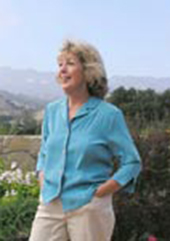
Janet Halliwell was born in Manchester, England, to Irene and Ernest Halliwell. When
Janet was seven, the family moved from Manchester to a small country town, Ilkley,
Yorkshire, where Janet and her younger sister, Katherine, were raised.
A year after the family moved, Janet's father died of a heart attack. Irene worked
hard as a single parent, attempting to break the glass ceiling for women. Meanwhile,
Leonard Booth arrived in their lives, married Irene, and brought laughter, fun, and
joy as Janet's second "dad."
In 1966 Janet left home for University, the first in her family to go to college,
and completed her undergraduate degree in Sociology from London University.
Janet left England for her first job, in Uganda, East Africa, where she worked as
a teacher for two years under the auspices of the British "Voluntary Service Overseas."
It was there she met Harvey Shapiro, an American Peace Corps volunteer from Philadelphia.
In 1971 Janet left Uganda at the beginning of the tyrannical reign of Idi Amin and
traveled to Philadelphia where Janet changed her name to Shapiro when she married
Harvey. The Shapiros fed their interest in multi-culturalism by moving to Jamaica
where they taught high school English and math in Kingston.
Two years later they sailed by banana boat back to England from the West Indies. After
a year teaching multi-cultural education in England, the Shapiros moved back to Philadelphia
where they returned to college. Janet completed her Masters in Special Education at
Antioch University.
At the end of the seventies, Harvey and Janet studied the map. They chose a town where
the mountains meet the sea and the climate is next to perfect. In 1981 they moved
to Santa Barbara where Janet was hired as a Learning Disabilities Specialist at Santa
Barbara City College.
Janet's educational philosophy is one of celebrating diversity, promoting universal
design for access, and creating opportunity for all students to demonstrate ability.
Since 1988 Janet has worked as the Coordinator of Disabled Student Programs and Services
at Santa Barbara City College, providing community leadership on access and civil
rights for students with disabilities. Her service to the state has been extensive,
including being the chairperson of the Central California Branch of the International
Dyslexia Association and on the executive committee for the California Association
for Post-Secondary Education and Disability. In the Santa Barbara community Janet
has served on the advisory boards of Recording for the Blind and Dyslexic, United
Cerebral Palsy, Santa Barbara City Adapted Recreation, UCSB Disabled Student Services,
and was the founding coordinator of the Santa Barbara Coalition for Community Access.
In 1994 Janet completed her doctorate in Higher Education from Nova Southeastern University.
Her doctoral dissertation was on the topic of building self-advocacy skills for community
college students with disabilities.
Janet has traveled across the state and nation presenting workshops on disability
and access issues. In 1999 Janet received the Hayward Award for Excellence in Education
in recognition of her service to California Community Colleges.
Janet will lecture on the social construct of disability. The purpose of Janet's lecture
is for the audience to reflect on attitudes regarding our fragile, organic selves;
consider various models of public disability policy from the past; choose a reasonable
approach to public disability policy for our future; and decide on their role in influencing
future direction.
Janet's chosen lecture topic reflects her belief in a universal civil right: each
person not only has the opportunity to live and participate in the community of his
or her choice but also the opportunity to demonstrate ability. Janet believes this
opportunity is a function of public policy. Reasonable public policy is a reflection
of our society's attitudes. Janet's attitudes have been influenced by the philosophies
of Kant and Gandhi. Janet believes, "I should act as if the principle of my action
were to become by my will a universal law. If I wouldn't want everyone else to act
in a certain way then I shouldn't act that way myself. In all actions I should respect
the intrinsic value of our organic, fragile, human life."
Janet defines the concepts in her lecture title as follows:
Disability is society's barriers to the opportunity to demonstrate ability.
The Search is a careful examination in order to find something missing.
Reasonable is defined as agreeable to judgment based on moral intuitions and principles shaped
by contemporary culture.
Public means affecting all the people of the nation or state and shared by all members of
a community.
Policy is a definite course of action selected from among alternatives and, in light of given
conditions, used to guide and determine future decisions.

Peter Georgakis was born in 1948 in New York City, to Ulysses and Evanthia Georgakis, who emigrated from Greece to the United States in 1941 to escape the Nazis. He spent his childhood on Island Park, a small island off of Long Island. Although he spoke only Greek when he entered the tiny elementary school in Island Park, he was fluent in English by the time he began the second grade.
Peter attended Queens College in New York City, where he competed on the Varsity baseball team as catcher. He received his B.A. in Mathematics in 1970, and at 22 began teaching mathematics at Freeport High School in New York, inspired by his Greek culture’s high regard for the teaching profession. While teaching at Freeport High, Peter served as faculty advisor for the high school’s wildly successful Variety Show, and earned his M.A. in math education from Hofstra University. In 1976 he was chosen High School Teacher of the Year.
Seeking new challenges, the following year Peter moved to California to attend evening law school at the Santa Barbara College of Law. He took a position on the faculty of the newly-established Santa Barbara Middle School, where he created the math curriculum and taught for 7 years. After earning his J.D. and passing the California Bar Exam, he began practicing law part-time in 1981. After a very short time in law practice, Peter realized he could help far more people by remaining in the teaching profession and he took a part-time position at Santa Barbara City College.
Peter joined the full-time faculty at SBCC in 1985, where he has taught mathematics classes ranging from elementary algebra through calculus. In the late 1980’s, he spearheaded SBCC’s Excellence in Mathematics and Engineering Program (EMSE) for underrepresented students and more recently he was instrumental in securing a National Science Foundation grant to develop Mathematics 108, Mathematics for Elementary School Teachers, which debuted in Spring 2005. He has served as SBCC’s Mathematics Division chair and Department Chair, and as a representative to the Academic Senate.
In 1997 Peter received the Gerald C. Hayward Award for Excellence in Education, the highest honor given in California to a community college faculty member. He is a three-time nominee for the Mathematics Teaching Excellence Award, sponsored by the American Mathematical Association of Two-Year Colleges (AMATYC). Peter has served as an AMATYC committee chair, and as its Legal Advisor for many years; he has also been president of the Foundation for the California Mathematics Council Community Colleges (CMC3).
Peter’s reputation as a lively math teacher is largely based on the jokes he tells at the expense of his adoring family, which includes his wife Heather and three children Alexander (18), Zoë (16), and Fiona (14). Together, they miss no opportunity to travel or enjoy the performing arts.
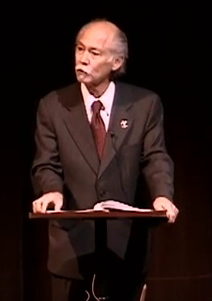
James Chesher was born in a bamboo shack on New Years Day, 1942. His mother, Melita Castillo, a native Filipina; his father, Lt. Robert Chesher, an American soldier. Fleeing the Japanese invasion of Manila, Melita gave birth to Jim, aided by a midwife. Taken prisoner with the surrender of American forces, Jim’s father endured the Bataan March and three years as a POW. He was among thousands of prisoners lost at sea by friendly fire, while being transported in enemy ships near the war’s end. In 1947, Melita emigrated with Jim to the United States, so that he could enjoy the benefits of American citizenship.
After three years in Toledo, Ohio, Jim and his mother moved to California. His mother remarried, had a daughter, and the family settled into the now idealized American life of the 1950’s. Graduating from San Jose State as an English major, Jim received his B.A. in 1964, a secondary teaching credential the following year, and began teaching at Abraham Lincoln High School in San Jose.
In 1969, Jim left secondary teaching to pursue graduate studies in philosophy at U.C. Santa Barbara, completing his M.A. in 1972. From 1975 until 1990, he was an adjunct instructor at Santa Barbara City College, and for several years at Antioch College, while working full time from 1973 until 1990 as a partner in Pacific Painting Company, with his friend and former classmate in philosophy, Bob Latham.
Since 1990, Jim has been a full time instructor in the SBCC Philosophy Dept. He has served as the Social Science Division Chair, on the Board of the Instructors Association, and as Social Science Division Senator on the Academic Senate.
Jim was Faculty Advisor to the SBCC Philosophy Club for over ten years, and co-hosted the IDC Faculty Colloquium with Dr. Eskandari. In 1997, with Joe White and Sasha Jokic, Jim helped establish the Center for Philosophical Education, which has hosted international conferences, published conference proceedings with leading academic presses, and produced STOA, an international, undergraduate journal in philosophy. Jim has taught in two Study Abroad programs: Florence in 1997, and China/VietNam in 1999. He is a charter member of the SBCC Online College.
Jim has published essays, letters, book reviews, and poetry in various books and periodicals, including Commerce and Morality, Business Ethics & CommonSense, Liberty in the 21st Century, Reason Magazine, The Freeman, The Chronicle of Higher Education, Reason Papers, and Poet Lore. He has co-authored two books with Tibor Machan: The Business of Commerce, and A Primer on Business Ethics.
Jim has three daughters: Jill, Kim, Ashley, a son, Gabriel, and five grandchildren. Jim’s wife, Victoria, without whom he would never have managed a social life, remember birthdays, or match shirt with tie, is his closest friend and soul-mate. This summer they will celebrate their 39th wedding anniversary.
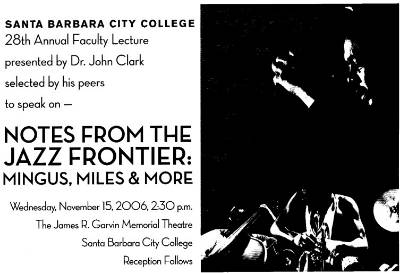
Dr. John Clark, the music department Chairman, teaches Theory and Musicianship, Songwriting, and several music literature classes including Jazz History, History of Rock and Roll, and Music Appreciation. Dr. Clark earned his Ph.D. in Music History from UCSB. An active composer, he has had several pieces performed by the SBCC Symphony Orchestra, most recently, "Dark Journey." He composed music for the Pulitzer Prize winning play, "The Kentucky Cycle." Dr. Clark is also an accomplished jazz painist who regularly performs with local ensembles.
Questions and Answers
Tell us a little about your background· where you grew up, your parents, your early
experiences.
I was born in December of 1952 in Taft, California. It's a small town about 30 miles
west of Bakersfield. I'm an only child, and my parents, Bob and Maudene, had moved
from Oklahoma and Texas, respectively, in the post-war years hoping to find a better
way of life in California. The oil business was booming and my dad started a trucking
and oil field service company that became very successful. My mom ran the office for
the company. I guess it was a typical small town childhood in the 50's and 60's in
California. I went to school, rode my bicycle everywhere, hung out with my friends,
got into trouble, the usual things. I played sports a lot-little league baseball then
baseball and football at Taft High.
How did you get into music?
My mom loved country music. She played records by Hank Williams, Patsy Cline, and
Bill Monroe all the time. When Elvis hit in 1956, his songs were played too. One of
my first musical memories is going to the record store with mom to get a new release
by Elvis, "Hound Dog." I played that record over and over again, couldn't get enough
of it. All that energy, and that amazing voice, definitely left a mark on me at age
five.
Then there was Buddy Holly and Chuck Berry. That was the music of my youth and I still
enjoy it. The love of jazz and classical music came later. I started playing the guitar
when I was about 10. I just wanted to play those Buddy Holly songs. I still play them.
I played trumpet in 7th and 8th grade band, learned to read music, made it to second
chair I think. My trumpet career came to an abrupt end when there was a league baseball
game and a band performance on the same day. The band director, Mr. Garner, said I
was out of the band if I missed that performance. I didn't even think twice. On that
Saturday after noon all those years ago, I played third base, not second trumpet.
Where did you go to college?
I took some music classes at Bakersfield College: theory and music appreciation. Chuck
Wood was teaching there at the time. Who knew that years later we would be colleagues
and friends in the Music Department here at SBCC. I earned a BA in piano performance
from Cal State Bakersfield and a Ph.D. in music history from UCSB.
What are your interests outside music and teaching?
I spend a lot of time working on cars, especially my 1977 MGB. British sports cars
are cool. I'm a film fan. I like crime dramas, foreign films, and westerns. I also
watch a lot of sports on TV. The auto mechanic thing will probably be my retirement
gig if the next few contracts between the Instructors' Association and SBCC don't
come out better than the last one.
Tell us about your family.
My wife Pam and I recently celebrated our 34th anniversary. She is clearly a saint.
We have two wonderful daughters, Jennifer and Jill. Our first grandchild, Jaleya,
was born in August of 2005. What a joy they all are most of the time.
What is the subject of your lecture today?
It's really more of a lecture-performance. I'm going to give a brief overview of the
composers and pieces on the program and then play them live with the fabulous musicians
I have asked to help me out here today. I will also be giving some insight into how
the performance is put together, what the musicians are doing, and what to listen
for.
I know there will be a lot of people in the audience who are not jazz fans but maybe
I can add to their understanding of this great music. Mostly, Ihope everyone enjoys
the music and has good time listening to it today.
(No Video Available)
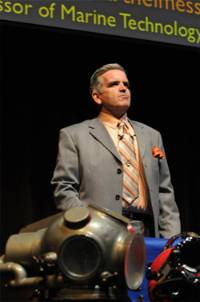
Don Barthelmess, son of Doris and Donald Barthelmess, Sr., was born and raised in Long Island, New York. Growing up in the coastal town of Patchogue, his family members were avid boaters and baymen. Don spent his youth on the waters surrounding Long Island, gaining an early appreciation for the ocean and those who made their living through it.
In 1973, at age thirteen, Don made his first SCUBA dive while visiting the Florida Keys. This experience influenced his decision to learn more about diving and make a career of it. Don attended Florida Institute of Technology in 1978, after graduation from high school. He received an Associate in Science Degree in Underwater Technology, with distinction, from FIT.
After college, Don worked for Taylor Diving and Salvage of Belle Chasse, Louisiana, and Solus Ocean Systems of Houston, Texas. He later joined International Underwater Contractors, Inc. of City Island, N.Y. At the time, IUC was expanding services in deep water using advanced diving technology and manned submersibles. IUC sent Don to Great Yarmouth, England, where he was trained and certified as a pilot for their new Mantis class advanced diving systems (ADS).
With IUC, Don worked in the Gulf of Mexico and off Santa Barbara, using submersibles and surface-supplied diving. In 1983, IUC established a U.S. depth record for working dives with an ADS, by diving Mantis 010 to 1,979 feet aboard the drilling rig Penrod 75. IUC and Jet Research Corp. later successfully placed and detonated the deepest shaped explosive charge, in 1,650 feet of water, to sever a wellhead. Don was the sub pilot during both these record-setting dives. Later that year, he established another record in the Santa Barbara Channel by piloting Mantis 011 to 1,450 feet during a live-boat environmental survey for the California State Lands Commission.
IUC provided Don with tremendous opportunities to travel worldwide and advance in his career, as the firm ventured into ROVs, hyperbarics, diver training and deep-sea filming for the National Geographic Society. In 1986, he was promoted to Manager of IUC’s Pacific Division in Ventura. Don left the firm in 1989, exchanging the rigors and demands of the offshore industry to settle down and start a family. Don accepted a full-time tenure-track position with the highly- acclaimed Marine Technology Program at Santa Barbara City College. He served SBCC as Program Director from 1994 to 2003, and as an Academic Senator and member of the College Planning Council.
In 1996, Don was tasked with redesigning the traditional academic structure of the Marine Technology Program to meet the rapid technological changes taking place in higher education. In 1998, the newly restructured program received the Exemplary Program Award from The Chancellor of the California Community Colleges.
Don has remained active in industry throughout his career. Since 1994, he has served on the Board of Directors of the Association of Commercial Diving Educators. He was Vice Chairman of the Marine Technology Society’s Los Angeles section. Don served on the Board of Directors of the Historical Diving Society USA and is a Past President of the organization. He was a member of the West Coast Chapter Committee of the Association of Diving Contractors.
Don was a co-author of the certification scheme for the American National Standard-Commercial Diver Training Minimum Standard, ANSI/ACDE-01-1998. Additionally, he serves on the Technical Diving Advisory Board for the National Association of Underwater Instructors (NAUI).
In 2003, Don completed an undergraduate degree in Occupational Studies at California State University, Long Beach. He stepped down as Director of the Marine Technology Program to return to the class- room and complete a graduate degree in Educational Technology from Pepperdine University. Don continues his passion for learning, technology and education by training and diving with his students in local waters.
Don’s educational philosophy embraces constructionism. He believes that knowledge is not transferred from teacher to student, but built collaboratively in phases, through rich and meaningful experiences. He believes long-term learning is embedded in social contexts supported by a dynamic community of practice.
Don has been happily married to his wonderful wife Carol Kallman for 19 years. Don and Carol live on the Santa Barbara Mesa with son Robby, 18, and daughter DeeDee, 16.
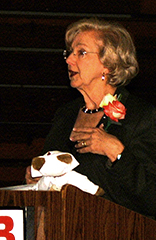
Karolyn R. Hanna was born in 1942 to William C. and Irene (Johnson) Klammer in Mankato, MN. The eldest of four children, Karolyn was raised with a strong work ethic in a Christian home. At an early age, she and her siblings were required to participate in household chores. While her mother worked part-time, Karolyn was expected to “take care of” her brothers (not an easy task – which any of you who have met them will understand!) Childhood memories included fun-filled family gatherings and church-centered activities as well as active involvement in 4-H - a national youth organization where the emphasis was on “learning by doing” and striving to “make the best better” – a motto which influences Karolyn to this day.
After graduating from high school, Karolyn attended Mankato State College (now Minnesota State University, Mankato) where she earned a Bachelor of Science Degree in Nursing. While in college, she worked as a nurse’s aid and later as an operating room technician at a local hospital. Following graduation Karolyn moved to St. Paul, MN where she was employed as a staff nurse on a medical surgical unit at St. Luke’s Hospital. In September 1964, she was offered and accepted a position as a nursing instructor at Barnes Hospital School of Nursing in St. Louis, MO.
While living in St. Louis, Karolyn met Hugh E. Hanna, Jr., an officer with the USAF. In 1967, following completion of Hugh’s tour of duty in Viet Nam, they were married. From that point on, Karolyn’s career paralleled Hugh’s military assignments. When stationed at March AFB (Riverside, CA), she worked as an Operating Room Nurse at Riverside Community Hospital and taught part-time at Riverside City College. Following a move to Offutt AFB (Omaha, NE), Karolyn taught nursing and became Assistant Director of Creighton University School of Nursing. While living in Omaha, she earned a Master’s degree in Guidance and Counseling.
A move to McClellan AFB in Sacramento, CA found her taking a position as Staff Development Nurse and Assistant Director of Medical Education at Mercy San Juan Hospital. When Hugh went to the Naval Air Facility in El Centro, CA, she taught in the Nursing Program at Imperial Valley College. Then in 1978, Hugh accepted a position at Oceanographic Services in Santa Barbara and Karolyn was hired by SB Cottage Hospital as Director of Nursing Education. After moving five times in eleven years, the Hannas were able to put down roots! Since coming to Santa Barbara, Karolyn completed a master’s degree in Nursing from CSU Dominquez Hills and a PhD in Education from UCSB.
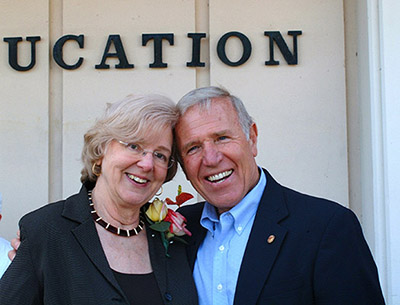
Karolyn’s career at Santa Barbara City College began in 1980. For the past 29 years, she has been committed to providing quality education to students enrolled in SBCC’s Associate Degree Nursing Program. She has also been heavily involved in college governance activities, having served two terms as President of the Academic Senate and on numerous college committees including the Student Learning Outcomes Project and the college’s Accreditation Self Study Steering Committee.
She also has served on committees and review boards for a number of state, regional and national organizations including the National League for Nursing, the Commission on Graduates of Foreign Nursing Schools and the Academic Senate for California Community Colleges. She recently participated in a UCLA-sponsored regional grant to further teaching gerontology at California Community Colleges and currently serves as a site visitor for accreditation of nursing programs by the National League for Nursing Accrediting Commission (NLNAC).
At the state level, Karolyn’s commitment to teaching excellence was recognized in 1994 when she received the Hayward Award for Educational Excellence from the Academic Senate for California Community Colleges. Last fall, she was honored with the Association of Community College Trustees Pacific Region Faculty Award - for the 2008-09 academic year. These awards represent the five top community college faculty members in the U.S.
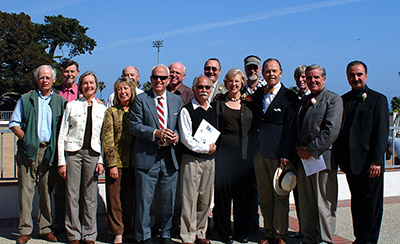
When asked about her educational philosophy, she shared the following: “Education is a powerful process. It creates opportunities, promotes growth and changes the lives of individuals, groups and communities. Students come to us with unique aspirations, interests and abilities. As we meet, the student and I begin a journey together – a journey toward their goal of becoming a registered nurse. To achieve that goal means acquiring the knowledge, skills and attitudes expected of members of the nursing profession. It’s a process that requires deep personal commitment and substantial effort. I believe that students must be active participants in the process. My role is to present a vision of excellence in nursing. I have to be knowledgeable, compassionate, a skilled clinician and a positive role model. Focused on educational outcomes, I guide and direct learning in a variety of ways. I strive to be open, honest and responsive to the needs of each individual while maintaining highest professional standards. By clarifying expectations and creating an environment that inspires, encourages and supports, it’s my goal to foster self-confidence, self-discipline, and ultimately the student’s own level of professional excellence. Their success becomes a shared success – together we touch the lives of others.”